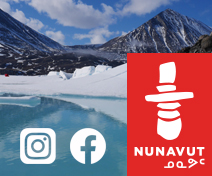Indigenous Tourism

Telling Their Stories Their Way
By E. Lisa moses
Whether you dream about soaring with eagles, paddling with fish or howling with wolves, Canada’s Indigenous tourism industry has it all—and then some.
“Indigenous People today are not stuck in the past or in museums, but rather practicing and sharing their culture with the world,” says Keith Henry, President and CEO, Indigenous Tourism Association of Canada (ITAC).
“We see examples from coast to coast to coast of Indigenous People using tourism as a means to share their thriving and vibrant culture with international visitors.”
Moving out of the shadow of the pandemic, there is a continued demand for Indigenous experiences. Across Canada, there are approximately 2,700 Indigenous tourism businesses, an increase of 800 from pre-pandemic. These enterprises provide the economic backbone for their communities across the country while sharing authentic, memorable and enriching experiences with international travellers (www.indigenoustourism.ca).
West
On the turbulent shores of the Pacific Ocean in British Columbia is the Great Bear Rainforest, the world’s largest intact temperate rainforest. Just a stone’s throw across the water is the base camp for Coastal Rainforest Safaris, where guests can reach out and touch nature—and benefit from cultural interpretation by an Elder and hereditary chief of the Gwa’sala-’Nakwaxda’xw First Nation (www.whalesandbears.ca).
Just 116 km (72 mi.) north of Edmonton is Métis Crossing, Alberta’s first major Métis cultural interpretive centre. The centre engages in the learning of Métis art, paddling an authentic voyageur canoe and dancing the traditional Métis jig (www.metiscrossing.com).
At the museum in Fort McLeod, Alberta, visitors can view First Nations artefacts such as clothing and accessories, baskets, travois and hand tools. Nearby, a UNESCO World Heritage Site, Head-Smashed-in Buffalo Jump, recalls the days when Blackfoot warriors augmented their communities’ food supplies by driving plains bison over the cliff to their deaths and processing the meat (www.headsmashedin.ca).
Central
The Canadian Museum for Human Rights (CMHR) in Winnipeg, Manitoba, aims to effect positive change by raising the public’s understanding of human rights, promoting respect for others and encouraging global dialogue about the issues. Set in a field of sweetgrass at the Forks of Manitoba’s Red River, the building’s architecture evokes ice, clouds and stone (www.humanrights.ca).
Saskatchewan’s Northern Plains People offer transformative experiences at Wanuskewin Heritage Park, just outside of Saskatoon. Monthly Han Wi Moon dinners feature guided tours of the 6,400-year-old area topped with mouth-watering Indigenous meals of bison or fish and foraged produce (www.wanuskewin.com).
At the southern end of James Bay sits a former Hudson’s Bay Company (HBC) fur-trading outpost in Moose Factory, Ontario. Now a popular tourist stop, the original HBC staff house is part of a national historic site that commemorates the company’s early operations. The area is also home to the Cree Cultural Interpretive Centre, where visitors can learn about the fur-trading era through displays of artefacts, furs and photographs. Moose Cree Outdoor Discoveries and Adventures adds boat tours, cooking demonstrations and hunting and fishing expeditions (www.moosecree.com).
East
The largest freshwater island in the world, Manitoulin Island in Ontario, is home to six Anishinaabe First Nations that provide a rich cultural backdrop for tourists. One of these, the Wiikwemkoong, hosts the Annual Cultural Festival comprising one of North America’s longest-running powwows with colourful dance competitions, Indigenous cuisine and handmade arts and crafts. On their Unceded Journey tour, learn about historical treaties and awe-inspiring legends, including Zhibzhii, the underwater spirit (www.wiikwemkoong.ca).
In Ottawa, Ontario, the Summer Solstice Indigenous Festival is a four-day interactive arts festival that attracts 50,000 annually. Highlights include First Nations, Métis and Inuit artists, powwow competitions, culinary events and lots of family fun (www.summersolsticefestivals.ca). Farther south at the Six Nations reserve near Brantford, visitors can stop at the Chiefswood National Historic Site to tour the home of the legendary E. Pauline Johnson, a mixed-race Mohawk who helped define Canadian literature. Across from the property, rent canoes and paddle down the Grand River (www.chiefswoodnhs.ca).
Within the vast province of Québec, there are more than 190 uniquely enriching opportunities to experience the protective values of the Indigenous cultures and heritage intertwining art, culture, gastronomy, nature and adventure. Discover the variety of customs and history transmitted by elders from generation to generation, sharing a rich culture of authentic, ancestral and contemporary traditions (www.discoverindigenousquebec.com).
Just outside Québec City, enjoy Indigenous culture from the authentic four-star Hôtel-Musée Premières Nations, complete with indoor pool, fitness centre and dining terrace overlooking the Akiawenrahk (St. Charles River). Have a sleepover in a longhouse, a symbol of family and the legendary hospitality of Indigenous Peoples. There are 24 rooms and suites and the Indigenous-terroir themed restaurant called La Traite, which is helmed by Michelin starred chef, Marc de Passorio (www.tourismewendake.ca).
Maritimes
In Newfoundland and Labrador, the Torngat Mountains Inuit-led Base Camp & Research Station offers wildlife viewing reputedly unlike anything in the world. This includes adventurous treks such as Wolf and Caribou Adventures (www.thetorngats.com). For tamer pursuits, on Prince Edward Island’s Lennox Island, take home more than memories: make a traditional Mi’kmaq hand drum, create a birchbark art piece with porcupine quills or prepare Bannock cooked in the sand while listening to stories of traditional life on Lennox Island (www.lennoxisland.com).
New Brunswick invites guests to participate in Indigenous festivals and learn more about the province’s First Nations by partying along the powwow trail all summer. Discover traditional artefacts and practices at Metepenagiag Heritage Park, which houses a prehistoric Mi’kmaq village with displays of archaeological findings that provide glimpses into ancient times. The Augustine Mound, a cemetery dating back beyond 600 BC, adds to the mystery and history (www.tourismnewbrunswick.ca/indigenous).
Across the bay in Nova Scotia, Elders share stories about creation at the Wagmatcook Culture and Heritage Centre (www.wagmatcook.com). And in Membertou, just outside Sydney, the Mi’kmaq Medicine Walk is an educational stroll through the medicinal practices used by their ancestors. It includes a dream catcher workshop and the breaking of traditional luskinikn bread (www.membertoutcc.com).
Less than two hours from Halifax, connect further with the Mi’kmaq by joining a guided cultural program at Kejimkujik National Park. This starts with viewing some of the 500 petroglyphs they created centuries ago. Then witness the ancient craft of birchbark canoe-building in person with Todd Labrador and a Parks Canada Interpreter at work (www.parkscanada.gc.ca/kejimkujik).
North
The Eeyou Istchee Baie-James region, 800 km (497 mi.) north of Montréal, is one of Canada’s best travel adventures. Traditional Cree experiences, snowshoeing and hiking, museums, coastal tours and cultural festivals await (www.escapelikeneverbefore.com).
Increase the excitement in Kuujjuaq or Puvirnituq, two Inuit communities in Nunavik, in Québec’s far north. There you can enjoy a dog sledding adventure across the sea ice, get a hands-on course with an Inuk master igloo-builder, and even sleep under the northern lights in the igloo that you built (www.inuitadventures.com or www.ungavapolarecotours.com).
To explore Canada’s Arctic waters in comfort, book passage aboard an Adventure Canada cruise ship. Photograph polar bears and the aurora borealis from the deck, go ashore at Mittimatalik for an Inuit welcome and visit the Franklin graves on Beechey Island (www.adventurecanada.com).
In late June, Yukon’s Kwanlin Dün Cultural Centre hosts the popular annual Adäka Cultural Festival, which showcases the arts and customs of Yukon First Nations and Indigenous artists (www.adakafestival.ca).
The Northwest Territories boasts some of the world’s best viewing of the other-worldly aurora borealis. Watch the show from B.Dene Adventures’ cosy cabin on the shores of Great Slave Lake, or at Aurora Village in Yellowknife from the comfort of a teepee.
Nunavut offers unusual wildlife and Arctic experiences. Trekkers wanting to live the life can go winter camping like Inuit families, hunt exotic big game or simply put their feet up at one of the area’s lovely wilderness lodges.
For their valued visitors, Canada’s hospitable Indigenous Peoples have created spirited and spiritual journeys through their history and culture, carrying on the traditions of millennia. By educating guests with original stories and homegrown experiences, they send positive vibes to the world. And that is good medicine for the soul.






